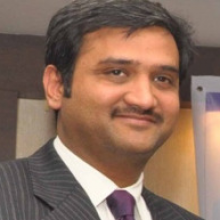Annual Operating Plan: A compass for your business in the new year

Business Development
233 week ago — 6 min read
I have been writing about various important aspects of business in 2020. At the start of the year, here are a few important points I would like to share with business owners.
The new financial year for a business is round the corner starting 1st April. The last quarter of business is a crucial period where the organisation will be busy catching up on the maximum possible sales for the financial year. It is also imperative for business owners and the board of the business to focus their attention on various critical components to be ready for the new financial year.
It is most advisable and an established best practice to start the Annual Business Operating Planning in the last quarter so that in the first quarter the business is totally focused to operate based on the plan. The starting point will be to address the following questions:
1. Is your Annual Operating Plan ready?
To answer this question, we need to understand what is an Annual Operating Plan (AOP). A detailed plan of strategy and execution, the Annual Operating Plan covers the top line, middle line, and bottom line of the business. Many understand this activity as a filling of numbers, and this is where the biggest myth is broken. How do you put these numbers? Will it be basis patterns and trends?
Post Covid-19, all patterns are changed and are on reset mode. So how does one estimate the numbers? This is where creating business scenarios becomes important. This would require intense brainstorming; insightful discussions; calibration and recalibration of business models; relooking of business models, product lines, markets, etc. Hence putting the numbers will be primarily an exercise of the data population. The substance in the matter is in creating the assumptions and scenarios with analysis of the market, competitors, business trends, and where the growth may come from in the future. The business owner and the board need to put in serious brainstorming time to construct the framework around which the numbers will be populated.
Also read: A new paradigm for people and business
2. Who will be the owner and champion of the Annual Operating Plan?
This question is important since someone in the organisation needs to start the process and own the closure. In businesses that are of the medium size, it is the primary role and responsibility of the business owner to start and close the AOP before the new financial year. They may take specialised help to do it but that will not absolve the business owner of the responsibility. In business systems where there are a Board of Directors operating it is the role of the business owner to start and close the process. Other departments may step in to support the process. The business owner with the help of experts or on their own must moderate and facilitate the activity.
Post Covid-19, all patterns are changed and are on reset mode. Businesses require intense brainstorming; insightful discussions; calibration and recalibration of business models; relooking of business models, product lines, markets.
3. What will be your assumption for planning business?
The most complex component in AOP is not the numbers but the route to reach the numbers. Scenario building based on critical business assumption is the key and heart of the AOP. This requires the team to spearhead a very strong understanding of the macro and micro factors of the economy, sectoral growth trends, SWOT analysis of the organisation and its competitors, expansion plans, resource requirements such as infrastructure, machinery, people, new markets. Organic or Inorganic growth is also an important component in AOP activity. it is needful for the whole organisation to link their functional deliverables to the larger goals of the business. In mid-sized businesses this activity may be done with handholding and support of experts, in established larger systems the scale and systems ensure that the organisations have a structure to refer for such an activity. Hence it becomes very essential for mid-sized businesses to focus on this area to conduct a focused business year.
Also read: 5 myths about business planning
4. What should be the right number of top line?
Topline defines the starting point of scale in the business. The conundrum is between aspiration and prudence in the business. Businesses need to evaluate the risks and opportunities to grow. The fine balance between spotting an opportunity and putting a plan with calculated risks versus being safe and sacrificing an opportunity is the craft to create a business plan and putting numbers around it. What should be the target number is therefore a huge matter of brainstorming. Organisations may take a transformational leap of faith to test the potential to grow or plan an organic approach to take a linear approach to growth. Many business owners do not think it is important to focus on the top-line and look to increase the bottom line which may be a good short-term approach but is not a sustainable strategy for growth in business.
These are the few critical points in this first series of the way forward in business planning. Will continue this in the next series.
Also read: Profitable organisation or Valuable organisation?
To explore business opportunities, link with me by clicking on the 'Invite' button on my eBiz Card.
Image source: shutterstock.com
Disclaimer: The views and opinions expressed in this article are those of the author and do not necessarily reflect the views, official policy, or position of GlobalLinker.
Posted by
Debashish DasLeadership and Business Growth Coach with over 20 years of experience in coaching and consulting. Specialist in HR, Strategy, Business Growth for SME and Corporates. As a coach...
View Debashish 's profile
Other articles written by Debashish Das
Annual Operating Plan: Approach to budget allocation
231 week ago
Most read this week












Comments
Share this content
Please login or Register to join the discussion